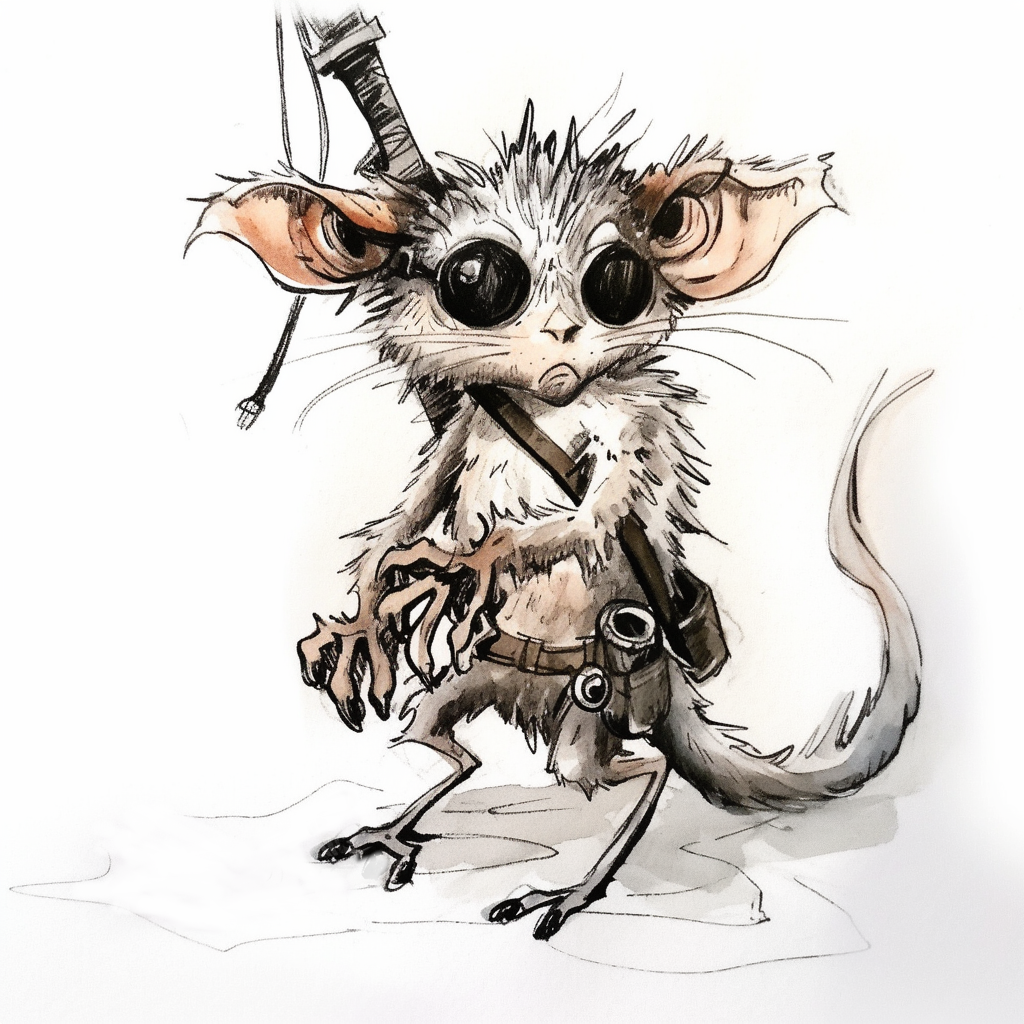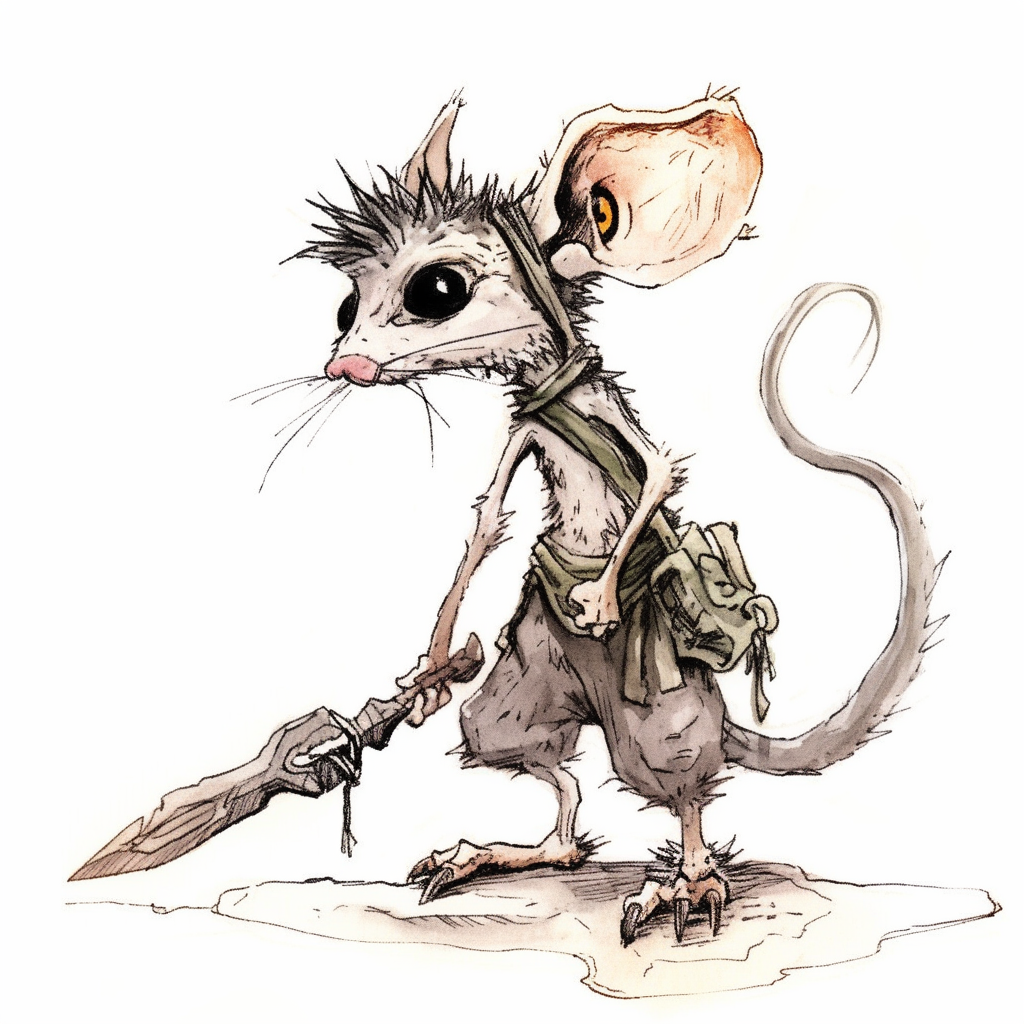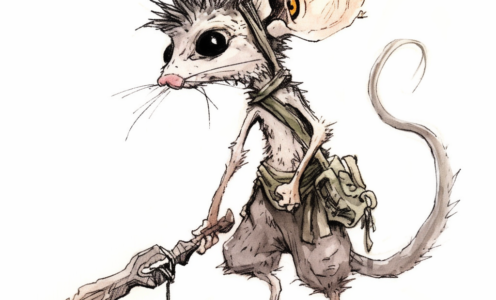Waurac
| CLIMATE/TERRAIN: | Urban, any plane but Limbo |
| FREQUENCY: | Rare |
| ORGANISATION: | Family |
| ACTIVITY CYCLE: | Any |
| DIET: | Omnivore |
| INTELLIGENCE: | Very (11-12) |
| TREASURE: | O |
| ALIGNMENT: | Chaotic Neutral |
| NO. APPEARING: | 2-5 |
| ARMOUR CLASS: | 6 |
| MOVEMENT: | 10 |
| HIT DICE: | 2 |
| THAC0: | 18 |
| NO. OF ATTACKS: | 2 |
| DAMAGE/ATTACK: | 1d4 / 1d4 |
| SPECIAL ATTACKS: | Scream, berserking |
| SPECIAL DEFENCES: | Dodge |
| MAGIC RESISTANCE: | 25% |
| SIZE: | T (2′ tall) |
| MORALE: | Unsteady (5) / Fearless (20) |
| XP VALUE: | 500 |

The waurac are generally regarded as the some of the best musicians in the multiverse, except by two races: The modrons (who dislike music in general, seeing it as wasteful and unproductive), and the slaadi (who dislike the waurac specifically, unless they’re the main course at dinner). Why do slaadi hate them? Who can figure out anything about that race of barmy frogs, cutter? It was, in fact, the slaadi’s hatred of them that caused the waurac to flee Limbo, never to return. Well, that and the fact that the slaadi expressed their hatred by killing them on sight.
Standing around two feet, these diminutive, furry creatures are often called “musicmen” as a compliment, or “musicmidget” as an insult. They never wear clothing, with the exception of a weapon belt holding both knives, flutes and tiny lyres, and the only discernible difference between the males and females is a predominant pouch on the latter, much like the prime “kangaroo”.
COMBAT: Waurac detest combat, and will go to nearly any lengths to avoid it, even selling family members (with the exception of a mother waurac and her pouchlings) as garnish to prevent violence from breaking out.
Nonetheless, their bloody encounters with the slaadi taught them well, and no waurac is ever seen without their trademark daggers strapped on. The waurac possess such dexterity that they can fight with a weapon in each hand without penalty, as well as get an automatic attempt to dodge melee attacks (use the extended combat rules for dodging or alternatively allow a save vs. wands each round, success meaning the waurac has ducked out of the way of an attack that would have otherwise hit).
If forced into combat however, a waurac will fight halfheartedly, using its dodge ability to avoid damage, and possibly striking with its daggers (50% chance per round). It will fight like this until either its opponent quits or is slain, or its automatic dodge fails, and it suffers physical damage. At this point, the waurac flies into a berserk rage and will attack all foes until they are either dead or stunned (see below); gaining the effects of double weapon specialisation for the duration of the rage (+3 to strike and damage).
As well, when enraged, the waurac will instinctively use a powerful scream once a round for the duration of combat. The scream is so jarring that all those within 20′ must make a save versus petrification or be stunned for 1-3 rounds. An enraged family’s screams reinforce one another’s, so that for each additional waurac, the radius is increased by 5′ and a -2 penalty imposed on the saving throw. Once the waurac has stunned all its foes (presuming its still alive), the rage is broken, and it flees. While enraged, the waurac still receives its automatic dodge.
HABITAT/SOCIETY: The waurac are a race of exiles, never allowed to return to their home plane of Limbo for fear of annihilation by the slaadi. Despite this, they still continue to play their music for audiences in exchange for food and lodging. Waurac today are wanderers, never staying in one place for long, and constantly searching for a new place to call home. The waurac are organised in loose-knit family’, which stay together until the pouchlings are old enough to play an instrument and wield a dagger, at which time they split and go their separate ways.
ECOLOGY: Waurac young are born premature, and then raised to infancy in their mother’s pouch. At eight months, the pouchling leaves the pouch and begins learning from his/her parents all the skills it will need to know. At the age of four, the waurac departs on its own. Each waurac brood consists of 2-4 pouchlings.
The average life-span of a waurac is around 40 years, although few survive this long. Due to their small size, waurac are extremely susceptible to sickness and disease, which usually is the death of them. However, no disease, not even lycanthropy is passed on from parent to child. Slaadi love waurac meat and will often pay up to 100 gp for a lone waurac corpse, rising to 300 gp if they get to kill it themselves.
Source: Jeremy Owen, artwork inspired by Chris Appelhans


